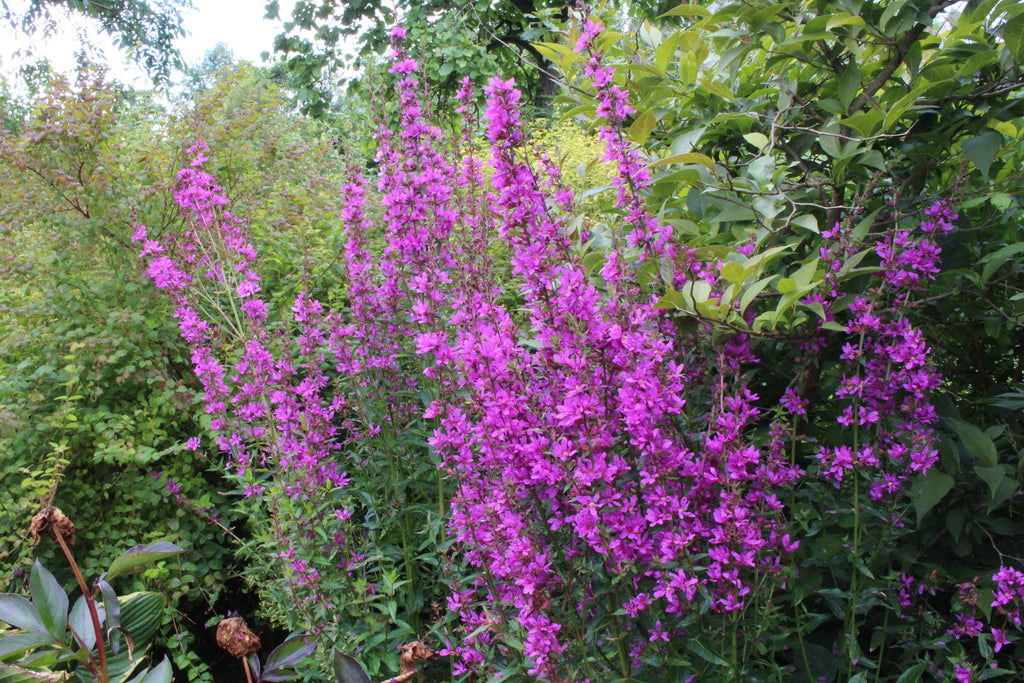


About this cultivar:
Lythrum virgatum 'Dropmore Purple' has intense purple-red flowers appearing on tall flower spikes from early summer above lance-shaped foliage. Named for Dropmore House, home to Lord Grenville, who as Prime Minister pushed through the law abolishing the slave trade.
- Position: Full sun, partial shade
- Soil: Almost any soil, grows well in Ballyrobert
- Flowers: June, July, August
- Other features: -
- Hardiness: Fully hardy, grows well in Ballyrobert
- Habit: Clump forming
- Foliage: Deciduous
- Height: 90 - 120 cm (3 - 4 ft)
- Spread: 60 - 90 cm (2 - 3 ft)
- Time to full growth: 2 to 5 years
- Plant type: Herbaceous Perennial
- Colour: Green, pink, purple
- Goes well with: -
About this genus:
Lythrum (lith-rum) gets its name from the Greek lythron, blood, in allusion to the colour of the flowers. It is a genus of 38 species of flowering plants native to the temperate world. Commonly known as loosestrife (a name they share with Lysimachia, which are not closely related). They are among 32 genera of the Lythrum family (Lythraceae).
They are herbaceous annuals or perennials, but we only grow perennials. Typically they have square stems, narrow stalkless leaves, and spikes of star-shaped flowers in shades of purple, pink and white. The species Lythrum salicaria (purple loosestrife) and Lythrum virgatum are found mostly in cultivation. In parts of America they are regarded as invasive - which leads to much debate over there because they are also native to many states! Just farmers complaining I guess....
They are especially associated with boggy areas, river banks and ponds, though in cultivation they often tolerate drier conditions. For us this means they grow almost anywhere - wet to dry - as long as there is some sun.
The cultivars of Lythrum salicaria are attractive to bees. And I mean ATTRACTIVE! It has been introduced in many areas of North America by bee keepers, due to its abundunce of flowers which provide a large source of nectar!

